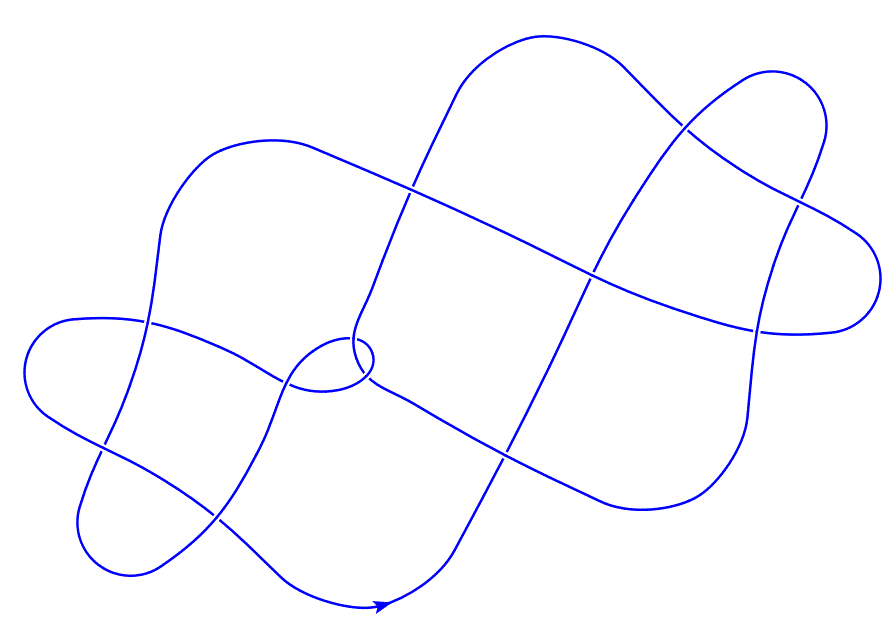I would like to extend the list of diagrams in the paper 'On strongly invertible knots' by Makoto Sakuma (1986) to knots with 10 crossings and succeeded for all but 8 of them: $10_{49}$, $10_{62}$, $10_{65}$, $10_{112}$, $10_{113}$, $10_{143}$, $10_{152}$, $10_{154}$.
Does anyone know of a method to obtain a symmetric diagram for these knots (or of an already existing list for 10 crossing knots)?
Some more detail: I look for transvergent diagrams for these 8 knots. Rotation about the axis then transforms the diagram into itself but with reversed orientation. If two axes are possible it would be great to have diagrams showing both axes simultaneously but for the moment I am fine with having diagrams with only one of them.
Edit, 24.05.2022: For $10_{112}$ the KLO diagram (see Marc's answer) based on the DT-code taken from Knot Info (and also the Knotscape diagram there) is already in the symmetric form (from the Rolfsen diagram it cannot be easily seen). For $10_{62}$ and $10_{65}$ I tried to modify the diagrams in KLO but was not yet successful.
Edit, 28.05.2022: Thanks Marc, for finding symmetric diagrams in all cases. For $10_{154}$ I transformed the intravergent diagram into the following transvergent one:
and the similar case of $10_{152}$ is obtained from this diagram by switching the crossing on the axis.
Therefore my goal to find symmetric diagrams for all strongly invertible knots with 10 crossings is achieved. In this set there are 45 2-bridge knots (these are always strongly invertible). There are 87 strongly invertible prime 3-bridge knots with 10 crossings (if I did not make an error in counting). I used the fact that invertible hyperbolic knots are strongly invertible and the symmetry information in Knot Info ('reversible' and 'fully amphicheiral' knots are invertible; note that there are several conventions for naming symmetries). I would like to present all 132 diagrams in a template fashion similar to the diagrams of symmetric unions in my paper "The search for nonsymmetric ribbon knots". One aim of this study is a comparison of these two cases ('symmetric' and 'anti-symmetric' diagrams; the first family denoting symmetric unions and the second strongly invertible knots with transvergent diagrams).









